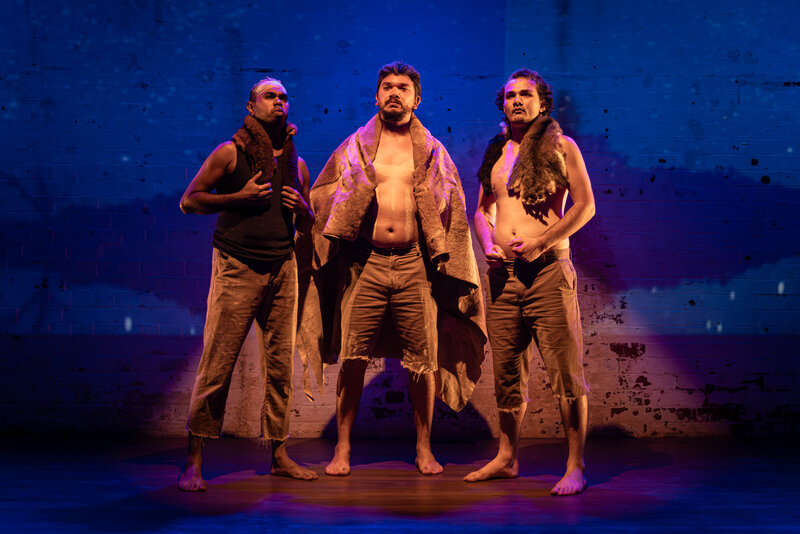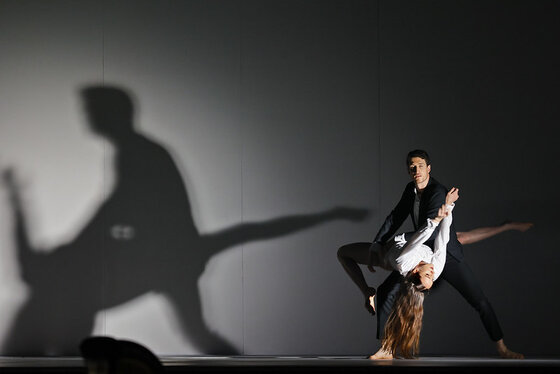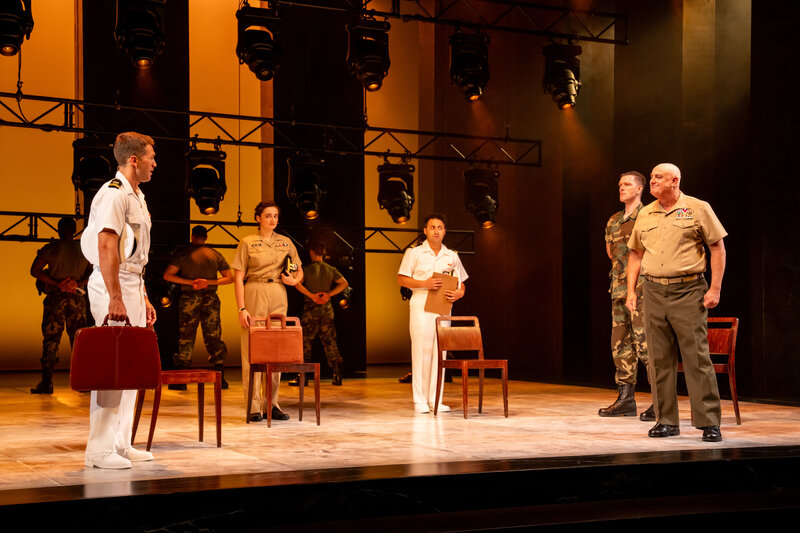Looking For Grace is the fifth feature film from award winning Australian filmmaker Sue Brooks (Japanese Story, The Road To Nihill). The film tells the story of Grace (played by newcomer Odessa Young), a teenage girl who steals some money from her father’s safe and, with her best friend in tow, heads off on a journey to see her favourite band. Her parents (Richard Roxburgh and Radha Mitchell) hire a veteran detective (played by veteran Terry Norris) to find her, but it is a decision that has repercussions. Brooks got the idea for the film when she read a newspaper article that described two girls running away from home in similar circumstances.
 “I don’t think I even saved the newspaper article,” Brooks recalls, “but when I read it I thought that’s a good premise for a film. So I started writing it with that as the starting point. But it was really a catalyst rather than a reason for making the film in the first place. I wasn’t interested so much in their journey, but more in how one simple act like that can have repercussions that ripple throughout their family and friends.”
“I don’t think I even saved the newspaper article,” Brooks recalls, “but when I read it I thought that’s a good premise for a film. So I started writing it with that as the starting point. But it was really a catalyst rather than a reason for making the film in the first place. I wasn’t interested so much in their journey, but more in how one simple act like that can have repercussions that ripple throughout their family and friends.”
The film unfolds in fractured narrative style, where we get to see separate stories from various characters, and we see the same events from different perspectives. Brooks has always been fascinated by this style of storytelling. Rashomon is one of her favourite films. “I suppose what happened to me was that each character started chatting away to me as I was writing it,” she elaborates. “I’ve been interested in that fractured narrative, those different points of view for a long time now. I like it for what it does to how you see and understand the world differently each time you look at it – like when you pick up a piece of crystal and look at it, then you turn it and you see something else. I was fascinated by that, and I think a lot of us Australians are as well.”
When Brooks wrote the script she didn’t initially picture any particular actors in the roles. But as it got closer to obtaining the funding for the production she came up with a short list of people she desperately wanted to be in the film. Richard Roxburgh was her first choice to play Dan, because he is a very funny and very fine actor, and he brings amazing warmth and vulnerability to the character. Brooks has always been a fan of Radha Mitchell’s work since she saw her in Emma-Kate Croghan’s low budget 1997 feature Love And Other Catastrophes.
 And Odessa came into the picture very late in the piece. “I was always conscious that I wanted to cast that character last because I wanted her to be genuinely to be on that cusp between being and adult and a child at the same time,” Brooks explains. “I have a personal dislike of films that have older actors playing younger parts. It doesn’t matter if they look younger but they always look like they’re knowing, they’ve crossed the bridge. It’s ill defined, but you know they’ve crossed it.”
And Odessa came into the picture very late in the piece. “I was always conscious that I wanted to cast that character last because I wanted her to be genuinely to be on that cusp between being and adult and a child at the same time,” Brooks explains. “I have a personal dislike of films that have older actors playing younger parts. It doesn’t matter if they look younger but they always look like they’re knowing, they’ve crossed the bridge. It’s ill defined, but you know they’ve crossed it.”
Odessa did a self test in her bedroom or lounge room where she read the script out, and it got posted to Brooks in Perth. Jane Norris, the casting agent, suggested that Brooks definitely needed to meet Odessa. In Sydney she met both Odessa and Kenya Pearson – who plays Grace’s best friend Sappho – in the one casting session. “Together they were just dynamite,” she enthuses. “They were in that cold, banal casting agent’s room and there’s no artifice there. But they just created this world together, and they were very funny, they were bold and they were just in synch with one another. So when I saw them acting together I thought: ‘Most of my work’s done here, just as long as I can get to cast them.'”
After the screening at the Venice Film Festival in 2015 critics were praising Young’s performance and were saying she’s “the next Scarlett Johansson.” Brooks says that she thinks Young has the maturity to deal with such accolades. “Odessa’s career is like on steroids; she’s had meetings that I wish I could get,” she finishes with a wry laugh.
And another newcomer in the cast is Harry Richardson, a graduate from the West Australian Academy of Performing Arts, who makes his film debut here. Richardson plays Jamie, a handsome young drifter who meets Grace on her journey and seduces her in scenes reminiscent of Thelma and Louise. “We filmed out in the wheatbelt over in Western Australia and we always knew there was a strong chance we would get someone from WAAPA. He was one of those people who did an audition. He just stepped into it. He’s amazing isn’t he? He’s cute as, isn’t he? And his career has taken off as well. Harry’s gone off to work with some famous British director already, and he’s off I’d say.”
Rounding out the cast is veteran actor Terry Norris, who will be familiar to older audiences for his work in the 1970s television show Cop Shop. “He’s amazing in this film I think, I love his performance. I think he’s a wonderful actor; if we were in America he’d be mobbed,” Brooks says. “He’s got a very easy style as a person, he’s got no wants, he’s very easy to talk to, he’s a very gracious man and I think all of that just permeates his work. He doesn’t worry that much about his work, and I think that comes through in his performance. He’s got a very easy style about him.
 “He and Julia (Blake) are two of the funniest people you will ever meet, they are such great story tellers. When I think back to making the film I can only remember you only get 45 minutes for your lunch break and everyone is champing at the bit to get back onto the job because you know the schedule’s a nightmare. Everybody’s like: ‘Quick we’ve got to do another 45 set ups before the sun goes down,’ and the crew would have left the set. Terry and Julia were sort of wandering along behind and would have a couple of the crew baled up with some beautiful story and everybody would be laughing. They’re a bit like my mum’s generation, with that attitude of ‘It’ll be okay, if we just do this with a bit of ease.’ I love that about their work.”
“He and Julia (Blake) are two of the funniest people you will ever meet, they are such great story tellers. When I think back to making the film I can only remember you only get 45 minutes for your lunch break and everyone is champing at the bit to get back onto the job because you know the schedule’s a nightmare. Everybody’s like: ‘Quick we’ve got to do another 45 set ups before the sun goes down,’ and the crew would have left the set. Terry and Julia were sort of wandering along behind and would have a couple of the crew baled up with some beautiful story and everybody would be laughing. They’re a bit like my mum’s generation, with that attitude of ‘It’ll be okay, if we just do this with a bit of ease.’ I love that about their work.”
Visuals have always been an important part of Brooks’ films, which are often set in remote locations. “The location part has always played a big part for me,” she acknowledges, “because I like to be placed in a film, I like a sense of knowing where I am in order to play out the film. And if you look at all three films, particularly Road To Nihill, and then Looking For Grace, it’s all to do with how we’re interconnected, how we talk to each other, and how we’re all one big part of the mesh of life.”
Looking for Grace opens on Australia Day.
Greg King

David Edwards is the former editor of The Blurb and a contributor on film and television




